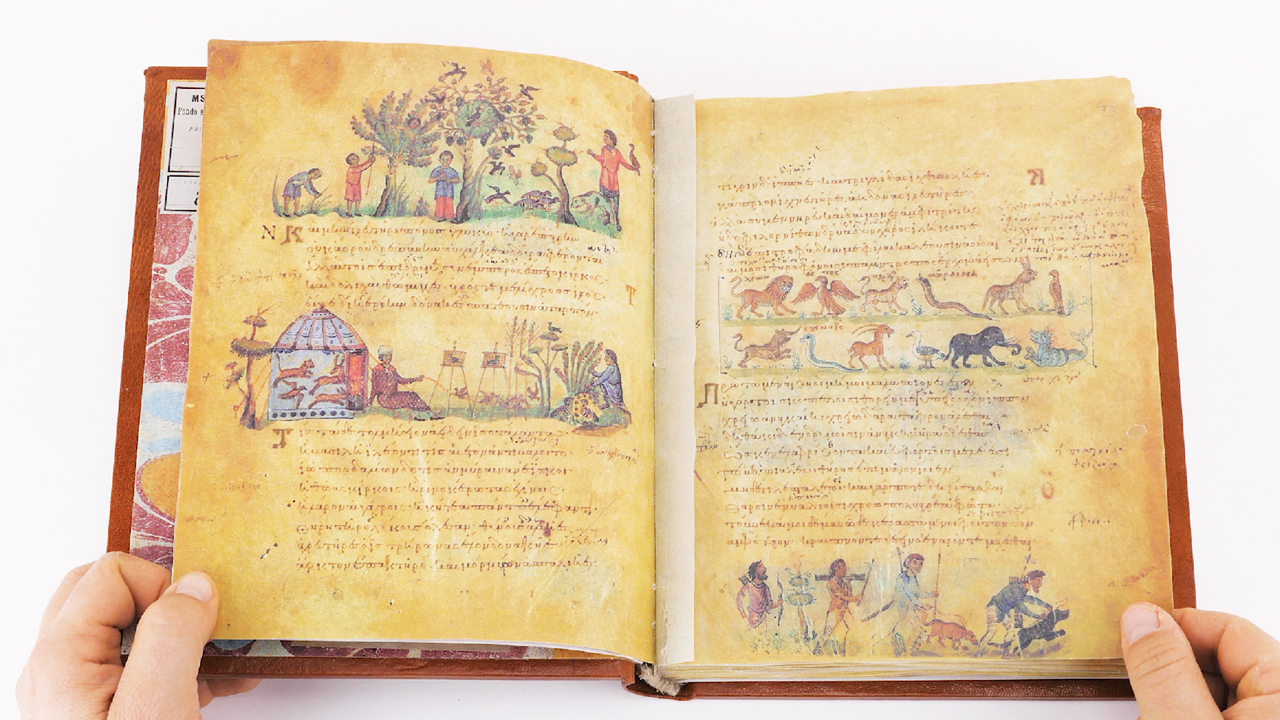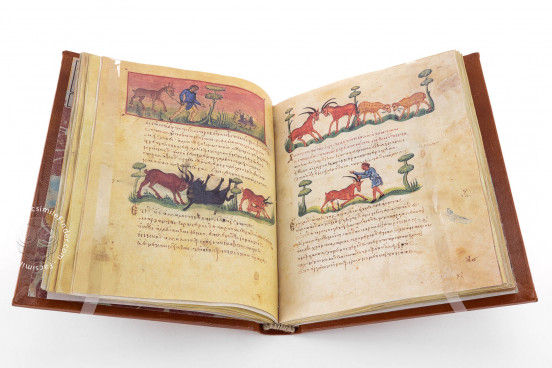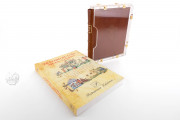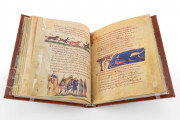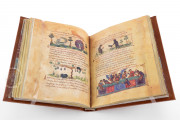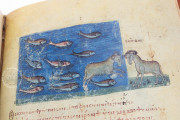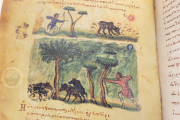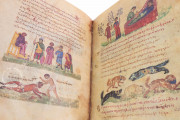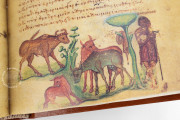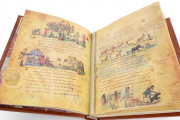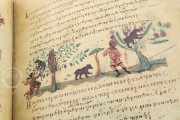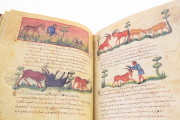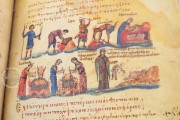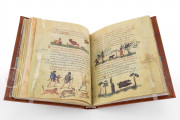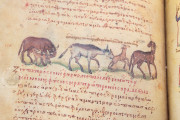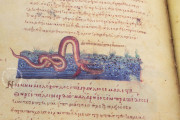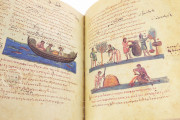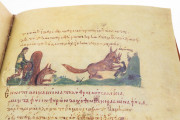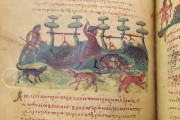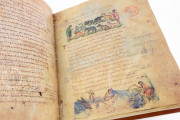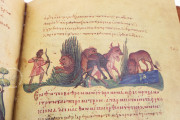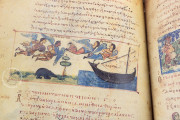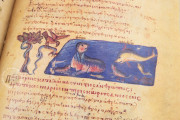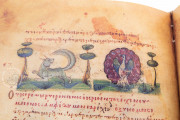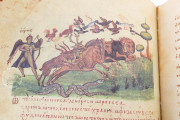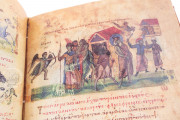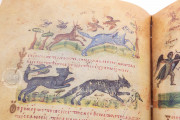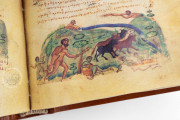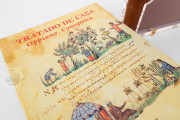The Treatise on Hunting in the Biblioteca Marciana is a profusely illustrated manuscript copy of the Greek didactic poem on hunting known as Cynegetica ("On Hunting"). It is the only illuminated manuscript of the treatise to have survived from the Middle Ages. The book was originally written and illuminated in Constantinople in the first half of the eleventh century. Its 150 lively miniatures picture both the practicalities of the hunt and the poem's many allusions to ancient Greek myth.
In the Marciana manuscript, the hunting treatise—composed in the third century CE by Oppian (or Pseudo-Oppian) of Apamea—was amplified in the second half of the twelfth century by the addition of a short biography of the poem's purported author. By the fifteenth century, some pages had been lost, and the missing text was supplied on seven new leaves.
Unusual Subjects
The lively illustrations rendered in bright colors depict extraordinary themes with few parallels. These give the manuscript the distinction of being a rare survival of an illuminated manuscript of the work of a classical Greek author, a prestige it shares with only a few other illustrious books such as the Vienna Dioscorides.
Drawing from Nature
The miniatures are the work of an inventive and skilled artist who drew inspiration directly from nature. Collecting scenes of animal life, mythology, and hunting, the miniatures also call to mind the mosaics and frescos of ancient villas and palaces. Each page offers a different layout of images: some have two miniatures, each spanning the width of the page, while others have one.
Miniatures in a Variety of Formats
Most of the scenes are painted on bare parchment and are unframed. Thirty-two scenes have thin red frames, and a very few scenes have backgrounds of pink or blue. Some of the miniatures are divided into registers (horizontal bands, each with a different scene).
A Fine Example of Perlschrift
The complicated layout necessitated close communication between the artist and the original manuscript's single scribe. The script is the Greek Minuscule known as Perlschrift ("pearl writing") after its rounded flowing quality. Each chapter starts with a majuscule letter set in the left margin.
The Greek Cardinal
In the fifteenth century, the codex belonged to Bessarion (1403-1472), a learned Catholic cardinal originally from Trebizond who settled in Italy in 1439. He employed the Venetian priest Giorgios Trivizias (d. 1485) to supply the manuscript's missing text in Greek Minuscule on new parchment.
A Public Library for the Republic of Venice
Bessarion bequeathed his enormous library to the Republic of Venice in 1468. It was housed in the Doge's Palace until the sixteenth century, when a public library—the Biblioteca Marciana or Libreria Pubblica di San Marco—was constructed to serve as home to Bessarion's collection and subsequent acquisitions. After the fall of the Venetian republic to the French in 1797, the manuscript was transferred to the Bibliothèque nationale in Paris. The sojourn north of the Alps was brief, as it was returned in 1816. It is currently preserved in a mid-eighteenth-century binding of leather over pasteboard.
We have 1 facsimile edition of the manuscript "Treatise on Hunting": Cynegetica: tratado de caza y pesca facsimile edition, published by Patrimonio Ediciones, 1999
Request Info / Price
